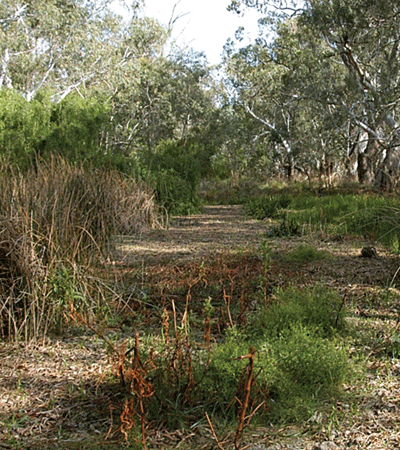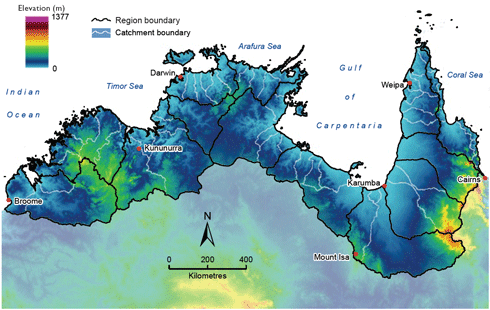
|
Published:
Climate change, not drought, the main suspect
In another CAWCR study, researchers have concluded that the 1996–2009 drought can be attributed to climate change, not natural variability.1

|
|
Dry lagoon on the Murray – decreased rainfall since 1993 in south-eastern Australia has been more strongly linked to climate change. Credit: ScienceImage/Greg Rinder
|
The Bureau’s Dr Bertrand Timbal said rainfall in south-east Australia has decreased over the past 13 years because the subtropical ridge – a band of high-pressure systems over the south of the continent – has become bigger, stronger and more frequent.
Dr Timbal found that 1996–2009 was the driest period in the 110 years of the Bureau’s records for south-east Australia, surpassing the previous driest period during WWII, and with the most significant annual rainfall declines occurring in autumn and spring.
He pointed out that this seasonal rainfall change ‘now more closely resembles the picture provided by climate model simulations of future changes due to enhanced greenhouse gases’.
When the CAWCR scientists ran computer simulations to establish ‘natural’ influences on temperature, such as changing levels of solar activity, they found no intensification of the subtropical ridge and no decline in rainfall.
But when they added increased greenhouse gas emissions, aerosols and ozone depletion, their modelling results showed strengthening of high-pressure systems in south-east Australia, causing up to 80 per cent of the drop in rainfall across the region.
A recent US study 2 assessed, for the first time, the combined impact on global temperature of four factors: human influences such as carbon dioxide and aerosol emissions; heating from the sun; volcanic activity; and the El Niño southern oscillation.
The analysis shows the relative stability in global temperatures in the last seven years is explained primarily by the decline in incoming sunlight associated with the downward phase of the 11-year solar cycle, together with a lack of strong El Niño events. These trends have masked the warming caused by carbon dioxide and other greenhouse gases.
1 Timbal B (2009) The continuing decline in south-east Australian rainfall: update to May 2009. In: CAWCR Research Letters 2, July 2009. (Eds PA Sandery, T Leeuwenburg, G Wang and AJ Hollis.)
2 Lean JL and Rind DH (2009) How will Earth’s surface temperature change in future decades? Geophysical Research Letters 36, L15708, doi:10.1029/2009GL038932.



